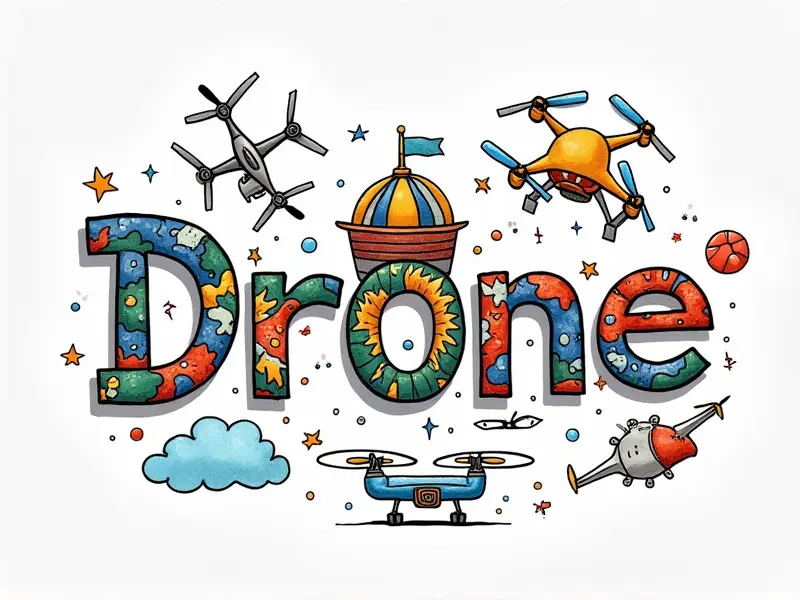Does FPV damage eyes?

Is FPV Flying Bad for Your Eyes?
Flying drones with First-Person View (FPV) technology has become increasingly popular among enthusiasts and professionals alike. However, concerns have been raised about the potential risks to eye health associated with this activity. This article delves into whether FPV flying poses a significant threat to your eyes.
Does FPV Cause Eye Strain?
Eye strain is a common issue among FPV pilots due to prolonged screen exposure and intense focus required during flights. The high-definition screens used in FPV goggles can cause visual fatigue, leading to symptoms such as headaches, dryness, and blurred vision.
Risks of FPV to Vision Explained
The risks associated with FPV flying primarily stem from the nature of the activity itself. Pilots must maintain constant visual contact with a screen that displays live video feed from the drone's camera. This can lead to several eye-related issues:
- Short-term effects: Temporary discomfort, such as dry eyes and squinting.
- Moderate risks: Increased susceptibility to infections due to reduced blink rate.
- Potential long-term consequences: Chronic eye strain leading to visual impairment if not addressed properly.
Long-Term Effects of FPV on Eyes
The long-term effects of FPV flying on eyes are less understood compared to short-term symptoms. Nonetheless, prolonged exposure to screens can potentially contribute to the development of more serious conditions over time:
- Cataracts: While not directly caused by screen use, continuous strain could exacerbate existing risk factors.
- Dry Eye Syndrome: Reduced blink rate and increased exposure to artificial light can lead to chronic dryness.
- Possible Retinal Damage: Although rare, excessive screen time might contribute to retinal issues in extreme cases.
Protecting Your Eyes While FPV Racing
To mitigate the risks associated with FPV flying, it is crucial to adopt protective measures that safeguard your eye health. Here are some strategies:
- Blink Regularly: Encourage frequent blinking to maintain moisture and prevent dryness.
- Adjust Screen Settings: Reduce brightness and contrast levels on FPV goggles for a more comfortable viewing experience.
- Take Breaks: Follow the 20-20-20 rule—every 20 minutes, look away from the screen at an object 20 feet away for 20 seconds.
Can FPV Lead to Eye Problems?
The likelihood of developing eye problems due to FPV flying depends on several factors including duration and frequency of use. While the immediate risks are manageable with proper precautions, long-term exposure could pose more significant challenges:
- Screen Time Limits: Limiting daily screen time can help reduce cumulative stress.
- Eye Exercises: Incorporate eye exercises to strengthen muscles and improve focus.
Is FPV Flying Safe for Your Vision?
In conclusion, while there are risks associated with FPV flying, it is possible to engage in this activity safely by taking proactive steps. By understanding the potential hazards and implementing protective measures, you can enjoy your hobby without compromising your eye health.
How FPV Affects Your Eye Health
The impact of FPV on eye health is multifaceted:
- Visual Fatigue: Intense focus and prolonged screen time lead to temporary discomfort.
- Dry Eyes: Reduced blink rate during flights can cause chronic dryness if not addressed.
FPV: Potential Hazards to Your Eyes
The potential hazards of FPV flying include both immediate and long-term risks. Understanding these dangers is the first step towards mitigating them:
- Immediate Risks: Temporary discomfort and visual strain.
- Potential Long-Term Issues: Chronic conditions such as dry eye syndrome.
Is FPV Racing Bad for Your Eyes?
Flying in an FPV racing environment can exacerbate the risks associated with prolonged screen use. The high intensity and speed of races increase visual strain, making it crucial to adopt protective measures:
- Race Preparation: Ensure goggles are properly adjusted for comfort.
- Post-Race Care: Follow a routine that includes eye exercises and hydration.
The Truth About FPV Eye Strain
The reality of FPV eye strain is clear—while it poses risks, these can be managed effectively through awareness and prevention. By adhering to best practices and taking necessary precautions, you can enjoy your FPV flying without compromising your vision.
Conclusion
In summary, while FPV flying does present certain risks to eye health, these challenges are manageable with proper care and attention. By understanding the potential hazards and implementing protective measures, you can continue to enjoy this thrilling hobby safely.

